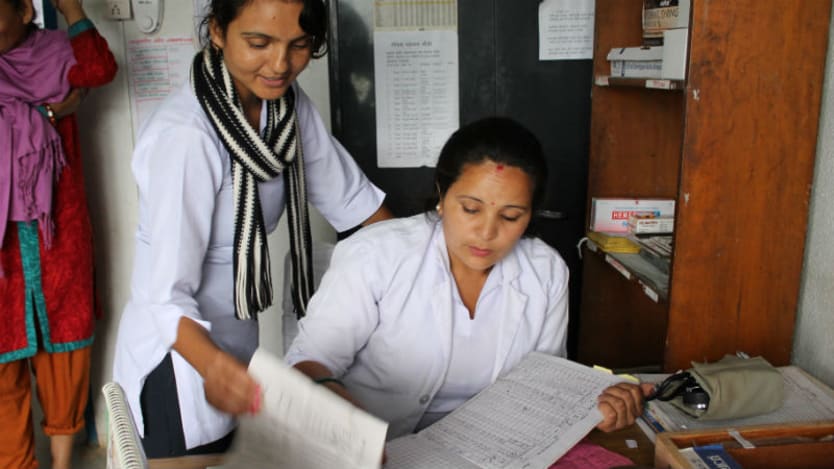
GENEVA — The question of how to meet the expected 18 million health care worker shortfall by 2030 featured prominently at this week’s World Health Assembly, with delegates being warned to avoid an exodus from low- and middle-income countries.
“We are going to generate in the next 10 years, more and more jobs in the health workforce, but they are going to be predominantly in high-income and upper-middle income countries,” Peter Salama, executive director for Universal Health Coverage and the Life Course at the World Health Organization, told member states and advocates at a technical briefing Thursday.
“The global market will fail us if we allow it to.”
— Peter Salama, executive director for UHC and the Life Course, WHO“And where will the gap be of those 18 million health workers? They will be in low income and lower-middle income countries. So the global market will fail us if we allow it to.”
Mahendra Prasad Shrestha from Nepal’s health ministry told the briefing that, “we are producing the health workers, but the retention is the problem.” And he raised the question of how wealthy countries can “compensate developing countries who are producing health workers for the developed world.” Shrestha said Nepal produces around 4,000 medical graduates each year, but retains less than 1,000.
The situation is actually even more complex, said Ibadat Dhillon, a technical officer at WHO’s health workforce department. “We are trying to get evidence on what is happening. There is so much of this discussion that happens without information,” Dhillon said, flagging a review in June of the WHO Global Code of Practice on the International Recruitment of Health Personnel, adopted in 2010. For now, 80 countries have reported results that belie simple conclusions.
“In Uganda, 40% of their workforce is foreign-trained, foreign-born. The second biggest group coming to South Africa are from the U.K., filling up empty public spots in South Africa,” Dhillon said. “Who belongs to whom? Does somebody who went to a private school in Nepal belong to the ministry of health in Nepal?”
Meanwhile, much of the movement of health workers is interregional, he added. “In Uganda, the first destination they are moving to is within East Africa. Does Kenya pay Uganda?”
WHO attracted 43 submissions through a call to action on how to address the health worker shortage and asked advocates this week to distill their key messages. Among them was to “apply and scale identified solutions and best practices.”
Asked to identify one example, Salama cited the “Working for Health” program in Niger. In that case, a national intersectoral health workforce investment plan by WHO and the International Labour Organization used catalytic funding of $400,000, supported by France, to add more than 12,000 health and social sector workers, and attracted over $25 million investment in the workforce.
Salama said some countries would need a massive increase in community health workers, while others may require more family doctors. And he said the most-needed type of worker could be “health workforce planners — a critical set of skills that is going to have to adapt all of those technical discussions and make the implications clear for the workforce.”
The assembly also passed a resolution on community health workers, identifying problems, such as unclear roles, poor training, lack of certification, lack of recognition, and donor-driven funding.
“Community health workers should not be regarded as a way to save costs or as substitutes for health care professionals, but as an element of integrated primary health care teams,” the resolution stated. “The role of community health workers should be defined and supported with the overarching objective of constantly improving equity, quality of care, and patient safety.”
Delegates also heard from Nobel prize laureate and former president of Liberia, Ellen Johnson Sirleaf, who was appointed this week as a goodwill ambassador for the health workforce.
She told the briefing Thursday that investing in paying nurses, for instance, “has a multiplier effect. Once you get the health workers and you get them paid and you get them moving, they are then able to inspire the community to do other things.”








